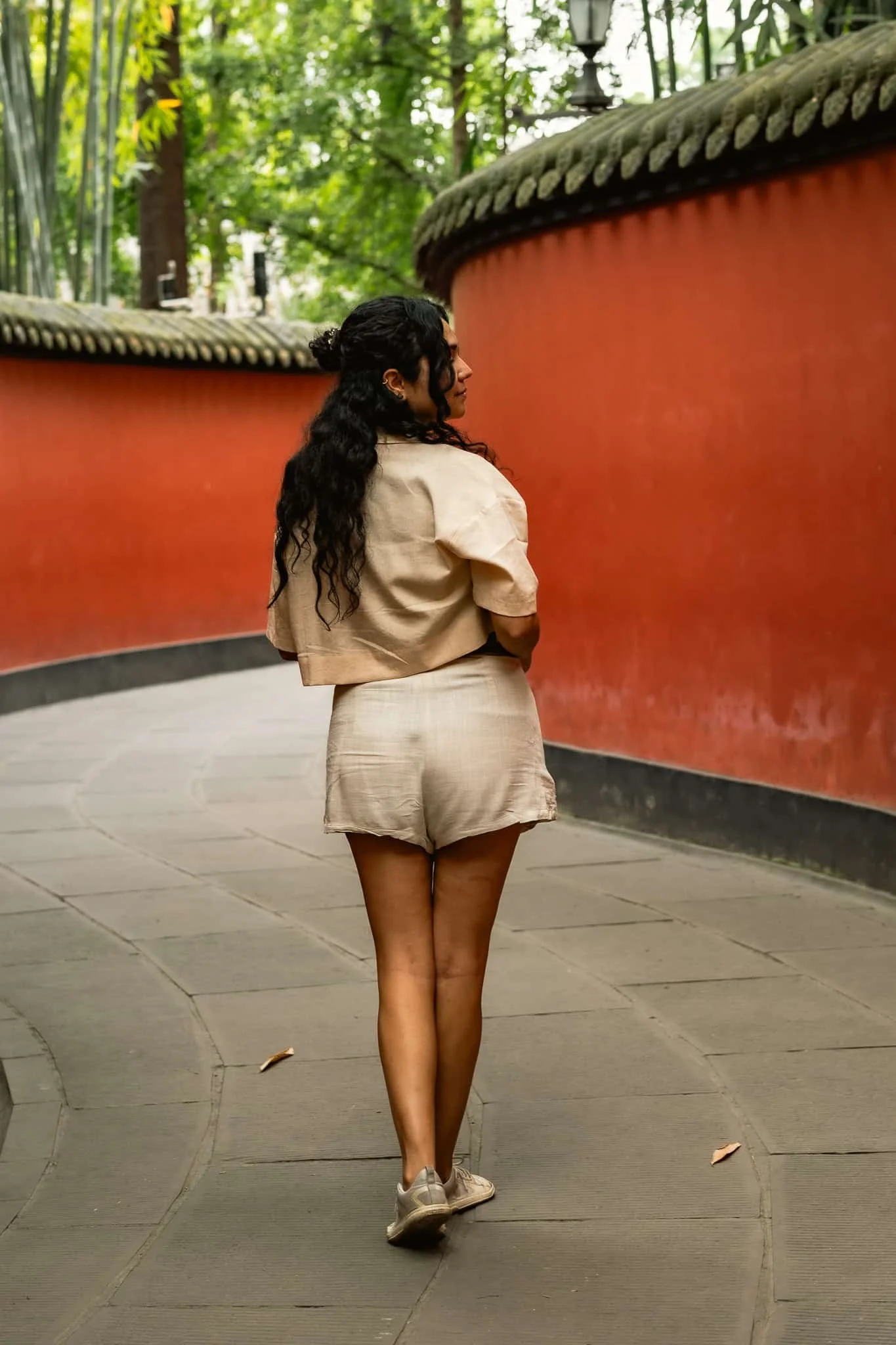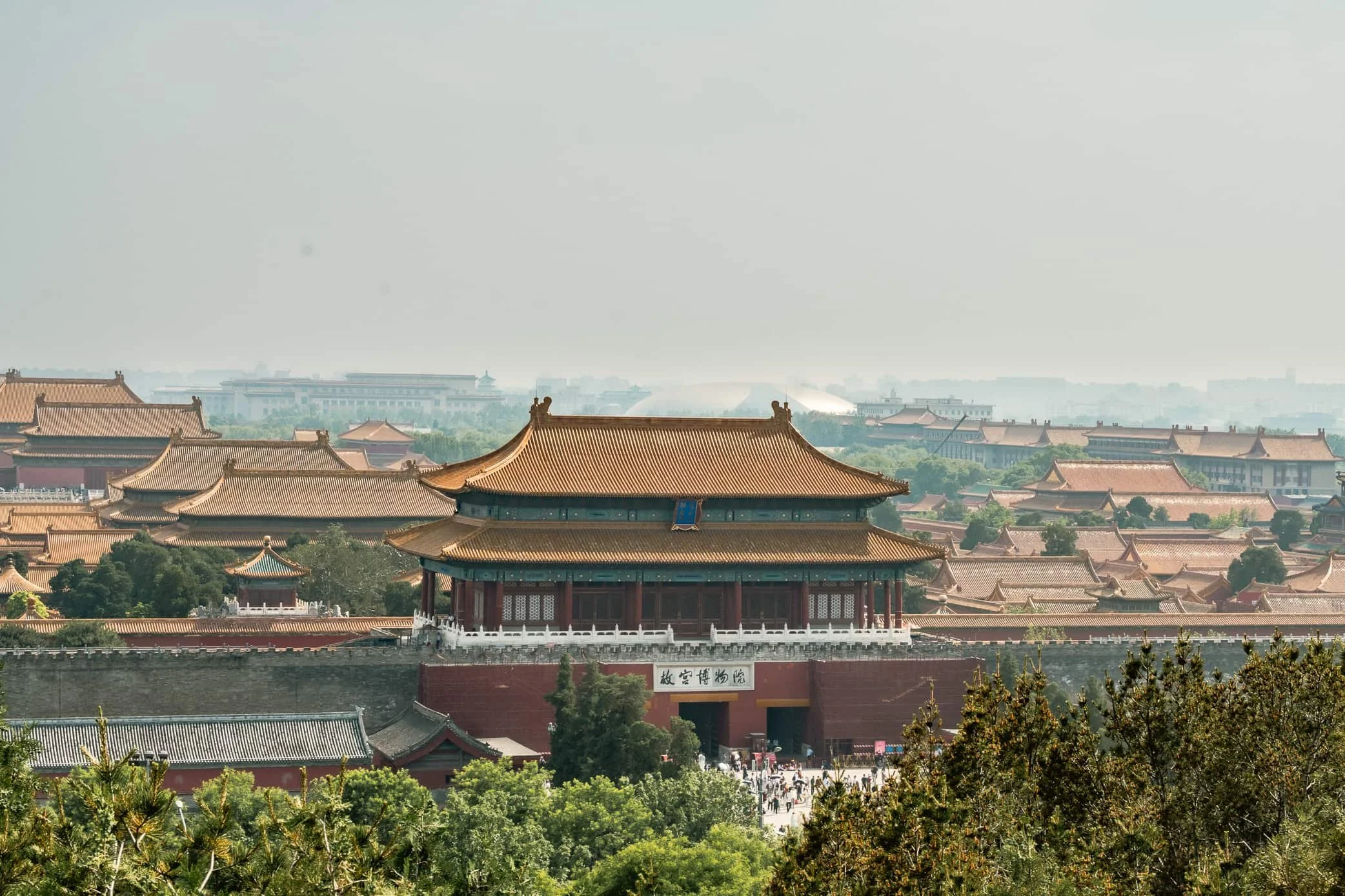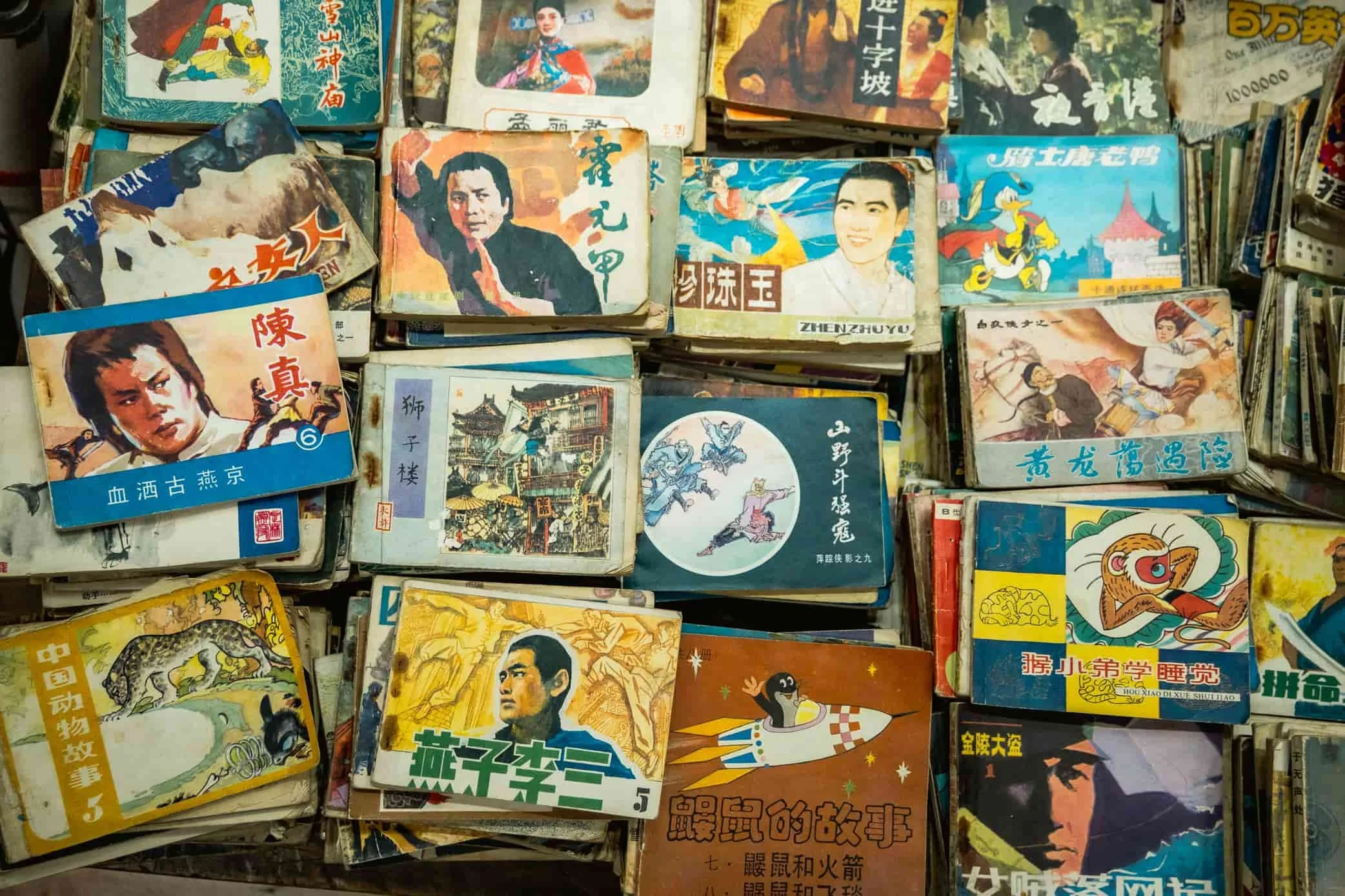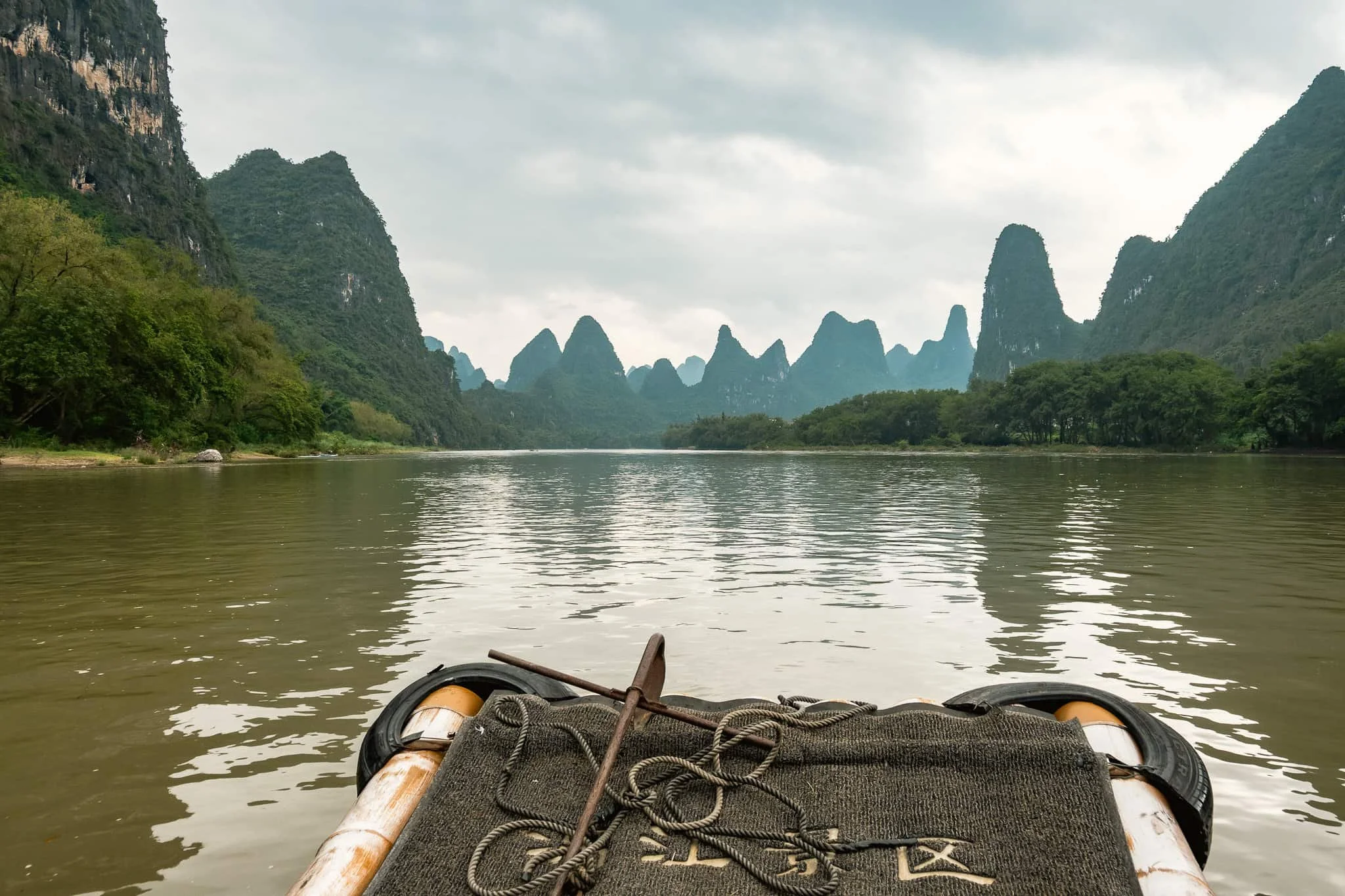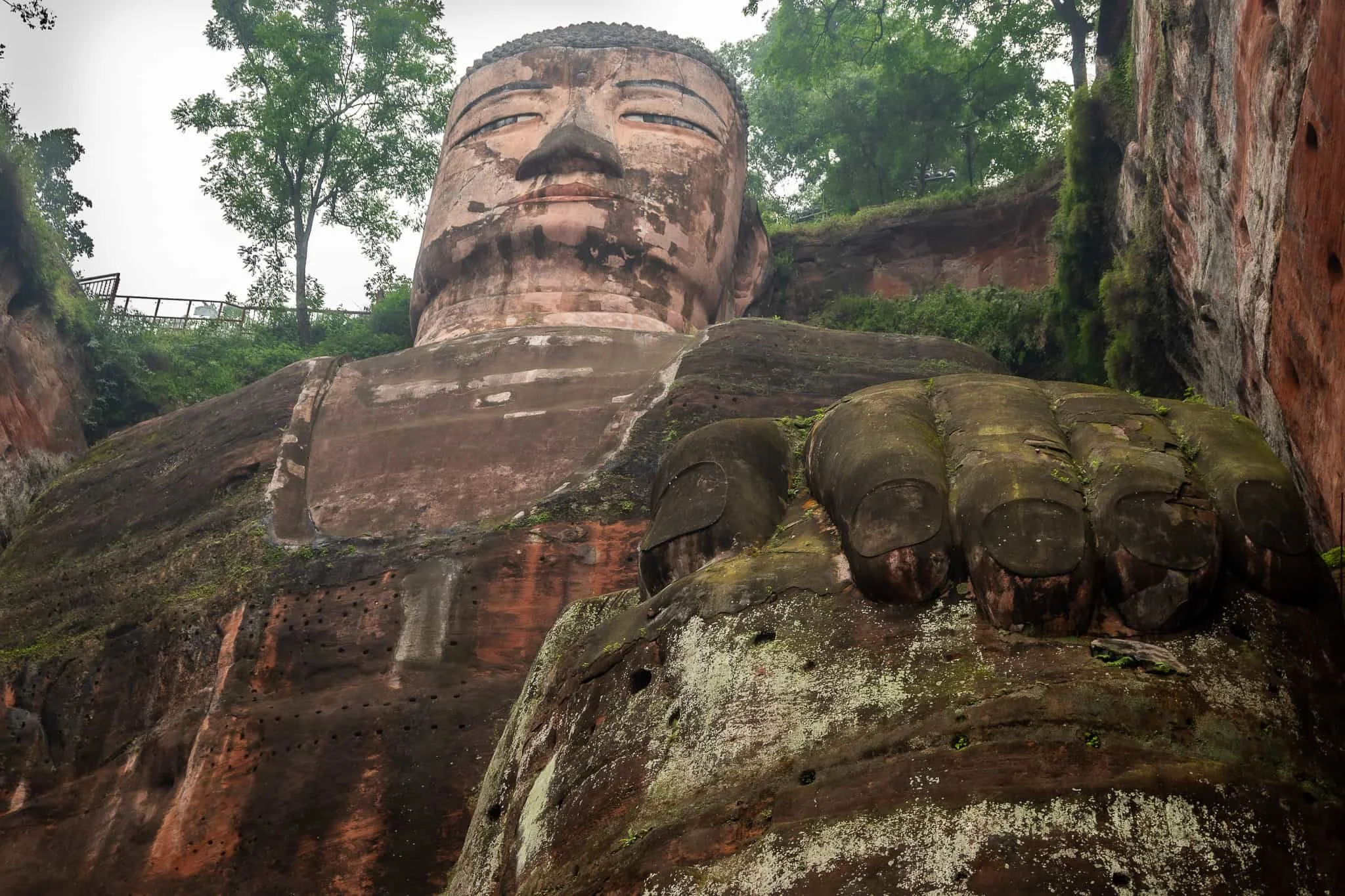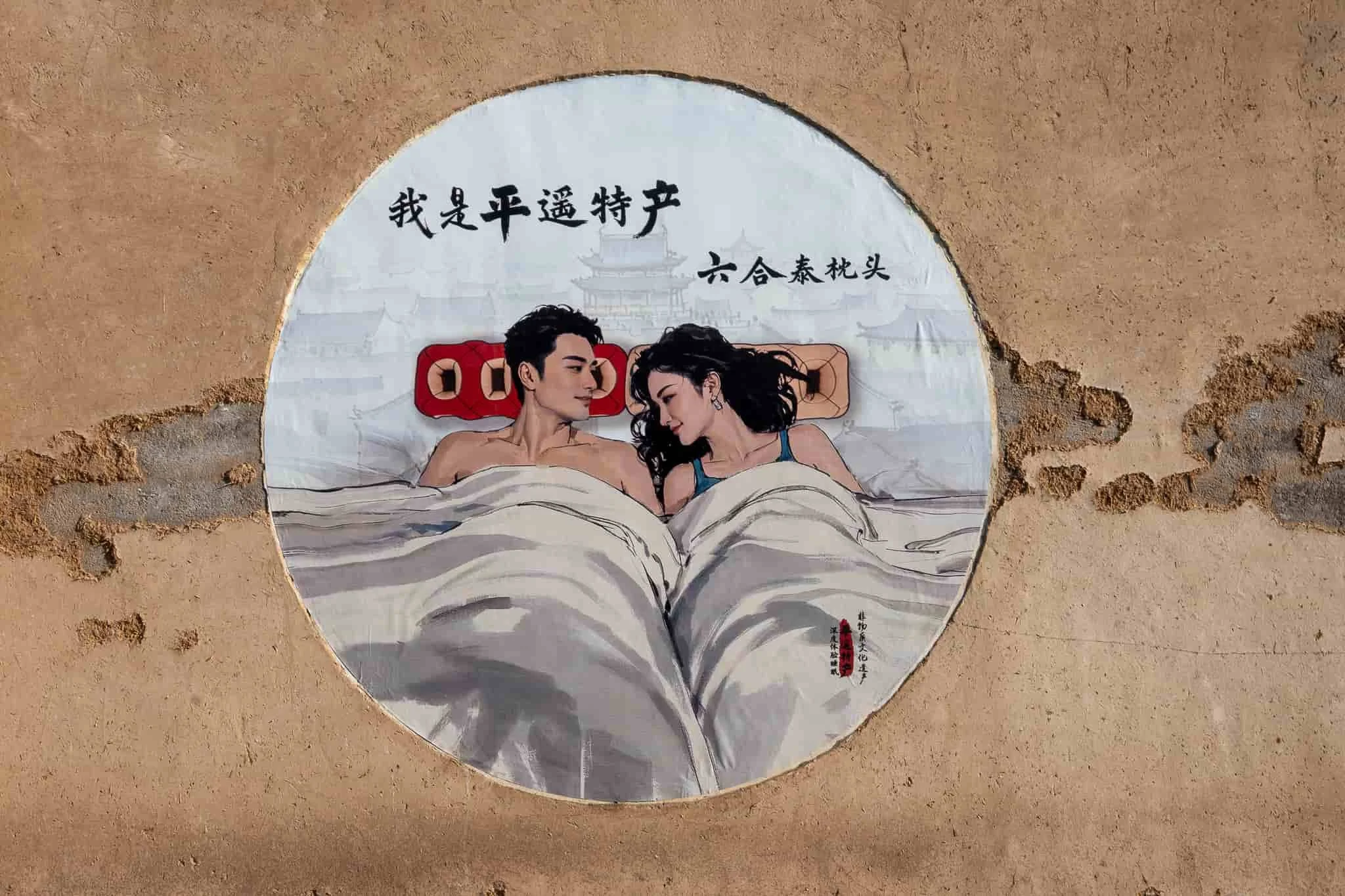China Packing List: What We’d Pack Again Next Time
Planning a trip to China? With its vast size and varied climates, packing smart is essential! This guide covers everything you’ll need—whether you're exploring Lively cities, hiking scenic mountains, or cruising along rivers. Let’s get you ready for every kind of adventure!Suitcase or Backpack?
China is a very accessible country, so traveling with a suitcase is convenient as most public spaces have elevators and escalators.
While we used backpacks on our trip, they’re not essential here. For China, we recommend downsizing your packing, as you really don’t need as much as we brought for our world trip. Having extra space will be handy, especially if you plan to buy souvenirs during your holiday. It’s always nice to have some room for those special finds without feeling overpacked.
We typically organize our clothes in packing cubes for quick access: one cube for bottoms, one for tops, one for outdoor clothing, and so on. We also pack our shoes in fabric reusable bags. It ultimately depends on your packing style.
READ | Our Worldtrip Packing List
Our Daypack Items
We have a list of daypack items we rely on every day, regardless of the country. You can check our Amazon Storefront list below.
For China, a helpful traveler’s tip is to carry tissues, a small roll of toilet paper, hand sanitizer and liquid soap in a refillable bottle, as public restrooms usually lack these supplies. It’s the country where we had the hardest time finding decent restrooms more than anywhere else we've ever traveled. Even restaurants and familiar Western chains do not have customer toilets.
If you're traveling in China during spring or summer, especially in the south like Guilin or outdoors, be sure to pack mosquito repellent and sunscreen. They’ll save you more than once.
READ | Everyday Essentials: The Must-Have Items in Our Daypack
BUY | Fjällraven Abisko Hike Foldsack (25 L) /Vaude Unuk II Daypack (6-15L)
Clothing
While China is generally a modern country, most locals in China go to great lengths to protect themselves from the sun, often wearing long sleeves, hats, or even full sun-protective gear. Revealing clothing is uncommon, and if you want to avoid standing out or feeling out of place, it’s worth keeping this cultural norm in mind.
Additionally, Chinese culture tends to favor modest clothing, with low-cut tops being uncommon. It’s best to choose t-shirts or tops that cover the shoulders and avoid tight clothing like leggings or body-hugging dresses.
Remember to dress conservatively, especially when visiting religious or cultural sites, such as temples or monasteries. In these places, both men and women should cover their shoulders and knees as a sign of respect.
✈︎ Ready to explore China but feeling overwhelmed? Start with our China Travel Essentials for budget tips, must-visits, and everything in between.
When packing for China, it’s essential to prepare for its hot and humid climate. Lightweight, breathable fabrics like cotton or linen will keep you comfortable during the day. However, winters in the north can be cooler, with temperatures dropping to around 10–15°C (50–59°F), so bring a light jacket.
We recommend leaving very long pants or floor-length trousers at home. Since you'll often be using squat toilets in China, you don’t want your clothes dragging on the floor. Instead, bring pants or skirts that you can easily roll or fold up when squatting.
When visiting Chinese beaches or hot springs, don’t forget to pack conservative swimwear.
Depending on when you are visiting, weather can be unpredictable, especially during the summer, so an UV umbrella or lightweight rain jacket is a practical addition to your bag to stay dry during sudden showers.
Comfortable walking shoes are essential for sightseeing and exploring China’s beautiful landscapes, while flip-flops come in handy as slippers in hotels. We recommend leaving your sandals at home as toilets in China are often very dirty, and most don't have Western-style toilets. If you're not used to squat toilets, there's a good chance you'll end up splashing your feet and trust us, that’s the last thing you want. If you’re planning on hiking, be sure to bring sturdy hiking shoes with good grip to tackle China’s scenic trails and rugged terrain.
Wondering how we used Instagram, WhatsApp, and YouTube while traveling in China? China’s internet is heavily restricted, and most Western apps are blocked.
We stayed connected with a Saily eSIM and used a reliable VPN to access everything just like we do at home.
CLOTHING PACKING LIST
Planning your next holiday?
When you make a purchase through our links, you support us without any extra cost to you.
Your support means the world to us!
FIND HOTELS | Booking.com
FIND A RENTAL CAR | Klook
FIND FLIGHTS | Kiwi.com
GET TRAVEL INSURANCE | HeyMondo (get 5% off)
BOOK TOURS & ATTRACTIONS | Klook
BOOK A BUS / TRAIN / TRANSFER | 12Go
Toiletries
You’ll probably will not find most of your usual favorite brand toiletries in China, so bring the ones you love with you. We recommend bringing sunscreen, mosquito repellent, solid shampoo or soap bars, and any personal skincare products you can’t go without.
We try to reduce our liquids and use solid products to make carry-on travel easier and refill our favorite products instead of buying new travel-sized ones each time. For more of our go-to travel toiletries and eco-friendly swaps, check our Amazon Storefront.
TOILETRIES
contact lenses, glasses, contact lenses supplies
FEMALE
feminine hygiene products (menstrual cup & period underwear)
make up & make up brushes
Menstruators Essentials for China
This can get a bit tricky, because toilet paper and soap are almost never provided, so you’ll need to carry your own. If you use a menstrual cup, your best bet is to head to a shopping mall, where you’ll have a better chance of finding a Western-style toilet and a cleaner space to change safely. But keep in mind: public restrooms are often crowded, and long lines can make it hard to empty your cup discreetly. If you prefer a different sustainable and hassle-free option, consider packing period underwear as a backup.
You will be able to find disposable pads without any issue, but finding tampons might not be as easy.
READ | Traveling on Your Period? Tips & Products to Stay Comfortable
TRAVEL MENSTRUAL ESSENTIALS
Electronics
Consider bringing a power bank for long days out. Chinese believe that confident people speak loud, so if this might be something you are not used to bring noise-cancelling earphones along. We love ours for plane, bus or train rides. An absolute must-have that you should not forget is a lightweight travel fan can also come in handy in the heat. China uses the plug type A, C, and I so make sure your adapter fits.
TRAVEL ELECTRONICS
smartphone & charger
camera, memory card & charger
power bank
Camera Gear
If you love taking photos as much as we do, China will keep your camera busy every single day. You’ll want to be ready for every kind of shot.
We always travel with our camera, drone, instax and phone setup, plus a few small accessories that make a huge difference. Think extra SD cards, waterproof cases, spare batteries, lens cloths, and a lightweight tripod for those sunrise and night shots.
If you’re curious about what’s in our camera bag or want ideas for upgrading your setup, check out our full post on our travel photography gear, we break down exactly what we use and why it works so well for travel days.
BUY | Camera & Photography Accesories we use on Amazon Storefront
Sustainable Recommendations
We always carry our reusable water bottles and China makes it easy with free hot water dispensers almost everywhere, a tradition rooted in drinking hot water for health and hygiene.
If you plan to bring snacks or cook your own food, we recommend investing in collapsible food containers and carrying reusable cutlery and metal straws. In many restaurants across China, single-use plastics and disposable chopsticks are still widely used even when dining in. Reducing plastics isn’t a strong focus, so if that matters to you, consider bringing your own reusable utensils.
We always carry a reusable bag for groceries and it's handy if we need to lighten our luggage at the airport counter, allowing us to transfer some items as our carry-on.
TRAVEL SUSTAINABLE FAVORITES
Laundry
We recommend packing light, as doing laundry in China is quick and easy. There are no laundromats or laundry services. That said, one major plus: nearly every accommodation we stayed in had a washing machine and often a dryer available for guests, completely free of charge. To be prepared, bring a reusable travel-sized bottle with your favorite detergent from home as not all stays provide it.
Don’t forget to pack a laundry mesh bag for both sustainability and to protect your delicates while traveling in China.
READ | Laundry on the go - the best tips based on our experience.
OUR TRAVEL LAUNDRY SET UP
Flight Essentials
Long flights to and within Malaysia can feel much smoother with a few essentials by your side. We always pack in a small clear toiletry bag in our small carry-on backpack our comfort and entertainment must-haves. Things like a neck pillow, noise-canceling headphones, a refillable water bottle, and a power bank. These little items make all the difference during long travel days.
BUY | Flight Bag Favorite Products on Amazon
READ | Comfort Meets Minimalism: Essentials for Your Next Flight
Safety
China is considered a very safe country and we always felt completely secure during our trip. Of course, as in any country, it’s still important to be mindful of your belongings in crowded and public spaces.
Newsletter
Turn dreams into plans and get a monthly dose of wanderlust with our tips, guides & travel stories.
Health
Vaccinations
Before traveling to China, it’s important to ensure you’re up to date on routine vaccinations, as well as consider any additional ones that may be recommended for international travel. It’s always a good idea to visit a healthcare provider or travel clinic at least 4 to 6 weeks before your trip to discuss any vaccinations specific to your health history and travel itinerary.
Recommended Vaccinations for China:
Routine Vaccinations: Make sure you’re up to date on the standard vaccinations, including:
MMR (Measles, Mumps, Rubella)
Diphtheria, Tetanus, and Pertussis (DTP)
Polio
Hepatitis A: The virus can be spread through contaminated food or water, and it’s advisable for travelers to get vaccinated before visiting China, particularly if you plan on visiting rural or less-developed areas.
Hepatitis B: It is recommended for travelers who may have exposure to blood or bodily fluids, such as those planning on staying long-term, seeking medical treatment, or engaging in high-risk activities.
Typhoid: If you plan to visit more rural areas or eat food from street vendors, the typhoid vaccine is recommended as it protects against foodborne bacteria that can cause infection.
Japanese Encephalitis: This is recommended for travelers who will be spending significant time outdoors in rural areas or near farms, particularly during the warmer months when mosquitoes are more prevalent.
Rabies: While rabies is not a major concern in China, it’s recommended for travelers who may have close contact with animals, especially for long-term travelers or those planning on hiking in remote areas.
COVID-19: COVID-19 vaccinations are also recommended, and travelers may be required to show proof of vaccination depending on current entry requirements.
Travel Insurance
Travel health insurance is essential for any trip, covering unexpected medical expenses such as doctor visits, hospital stays, prescriptions, and emergency treatments. It ensures you receive the care you need while protecting you from high medical costs. This is especially important when traveling to unfamiliar destinations or regions with limited healthcare access, where quality medical treatment may not be readily available.
To help you find the best coverage for your trip, we’ve put together a guide—here’s what to look for.
OUR PARTNER | Get insured with Heymondo and save 5% as a reader of our blog!
Payment Methods
Paying in China is unlike anywhere else. From QR codes to local apps, the system works completely differently and without the right setup, it can be frustrating. It was also the first country where we didn’t withdraw a single bill during our entire trip. That’s why we’ve created a dedicated post that walks you through everything you need to know about Chinese apps and payment methods. Check it out to make your trip smoother!
READ | The Only Chinese Apps You’ll Need for Your Trip to China
WISE: OUR FAVORITE TRAVEL CARD!
We use Wise everywhere: fair rates, easy cash withdrawals, and no hidden fees.
GET | Apply for your Wise card here
